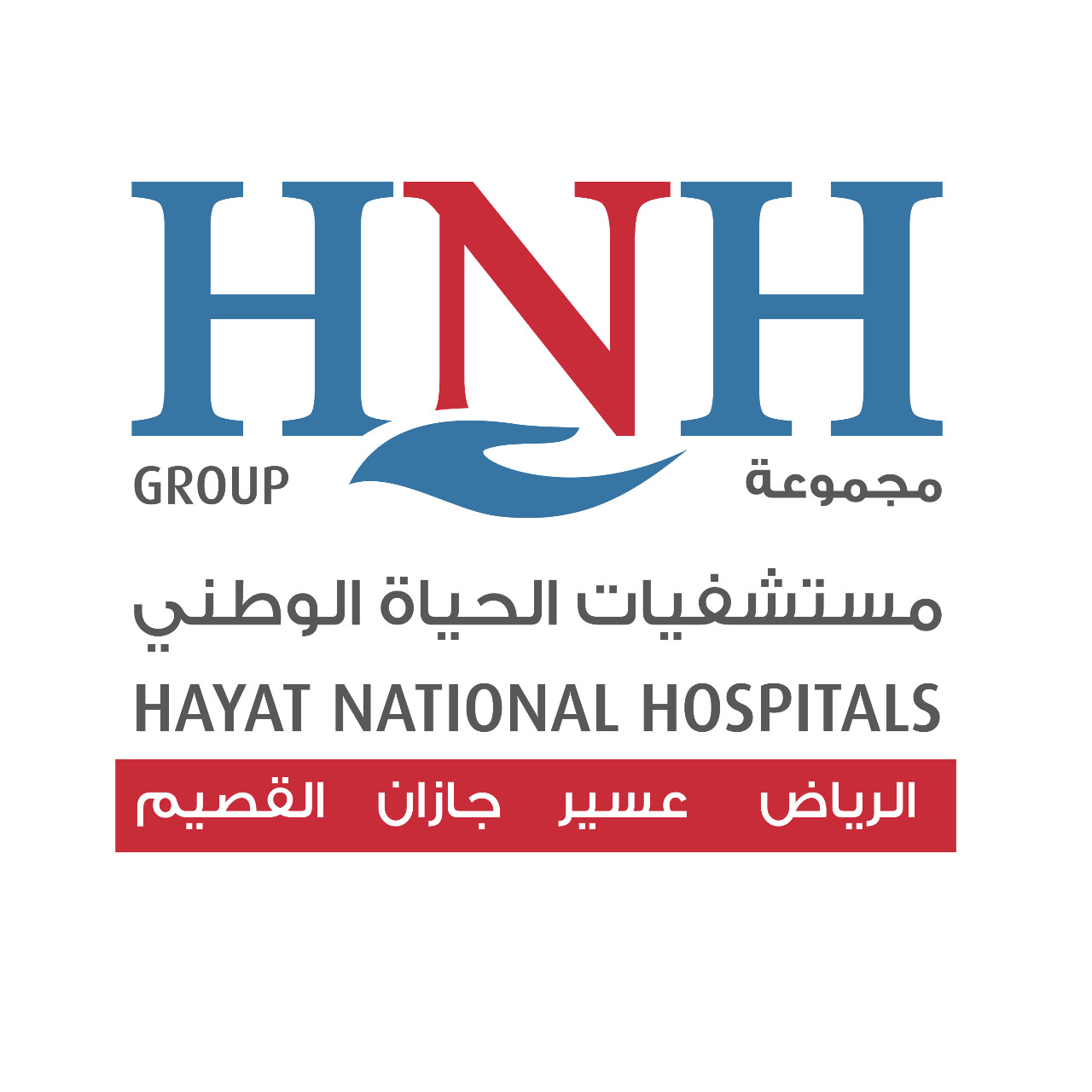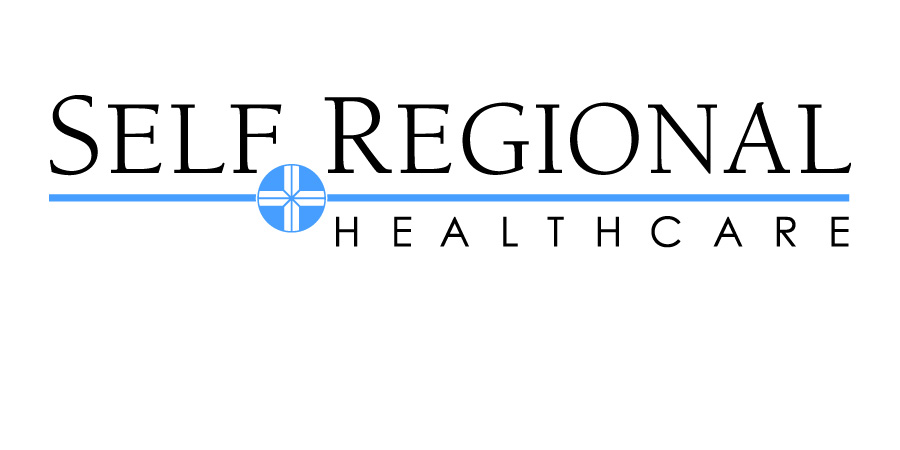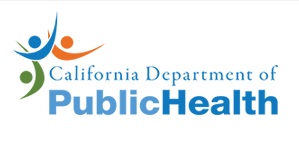Title Page
-
Conducted on
-
Prepared by
-
Location
HR.5. The hospital has a process for proper credentialing of staff members licensed to provide patient care
-
HR.5.1 The hospital has a written policy describing the process used for the verifcation of credentials.
-
HR.5.2 The hospital gathers, verifes, and evaluates the credentials (license, education, training, certifcation and experience) of those medical staff, nursing staff, and other health professionals licensed to provide patient care
-
HR.5.3 Credentials are verifed from the original source
-
HR.5.4 Job responsibilities and clinical work assignments/ privileges are based on the evaluation of the verifed credentials
-
HR.5.5 The hospital ensures the registration of all healthcare professionals with the Saudi Commission for Health Specialties
-
HR.5.6 Staff licensed to provide patient care must always have and maintain a valid license to practice only within their profession
-
HR.5.7 The hospital maintains an updated record of the current professional license, certifcate, or registration, when required by laws, regulations, or by the hospital for every medical staff, nursing staff and other healthcare professionals
-
HR.5.8 When verifcation of credentials is conducted through a third party, the hospital must request for a confrmatory documentation
-
HR.5.9 Verifcation process applies to all clinical staff categories (full time, part time, visitor, and locum)
MS.7. Medical staff members have current delineated clinical privileges
-
MS.7.1 Medical staff members are allowed to practice only within the privileges granted by the credentialing and privileging committee
-
MS.7.2 Clinical privileges are reviewed and updated every two years and as needed
-
MS.7.3 The hospital identifes the circumstances under which temporary or emergency privileges are granted
-
MS.7.4 Temporary or emergency privileges are not granted for more than 90 days and are not renewable
-
MS.7.5 When a new privilege is requested by a medical staff member, the relevant credentials are verifed and evaluated prior to approval
PC. 25. Policies and procedures guide the handling, use, and administration of blood and blood products
-
PC.25.1 There are policies and procedures that are developed collaboratively by the blood utilization committee, guiding the handling, use, and administration of blood and blood products
-
PC.25.2 Only physicians order blood and in accordance with a policy clarifying when blood and blood products may be ordered
-
PC.25.3 The physician obtain informed consent for transfusion of blood and blood products. Elements of patient consent include:
-
PC.25.3.1 Description of the transfusion process
-
PC.25.3.2 Identification of the risks and benefits of the transfusion
-
PC.25.3.3 Identification of alternatives including the consequences of refusing the treatment
-
PC.25.3.4 Giving the opportunity to ask questions
-
PC.25.3.5 Giving the right to accept or refuse the transfusion
-
PC.25.4 Two staff members verify the patient’s identity prior to blood drawing for cross match and prior to the administration of blood
-
PC.25.5 In dire emergencies, patient/family signs consent for "transfusion without NAT testing"
-
PC.25.6 Blood is transfused according to accepted transfusion practices from recognized professional organizations
-
PC.25.7 Policies and procedures guide the administration of blood transfusions
-
PC.25.8 Patients receiving blood are closely monitored
-
PC.25.9 Transfusion reactions are reported and analyzed for preventive and corrective actions
-
PC.25.10 Side effects or complications are immediately reported to the medical staff and blood bank and the transfused unit is sent to the blood bank for further investigations
PC.26 Patients at risk for developing venous thromboembolism are identified and managed
-
PC.26.1 Patients are screened for the risk of developing venous thromboembolism
-
PC.26.2 Patients at risk receive prophylaxis according to current evidence-based practice
QM.17 The hospital has a process to ensure correct identification of patients
-
QM.17.1 At least two patient identifers (e.g., patient full name and medical record number) are required whenever taking blood samples, administering medications or blood products, or performing procedures
-
QM.17.2 The hospital has a standardized approach to patient identifcation (e.g., use of ID bands with standardized information). QM.17.3 Patients are actively involved in the process of patient identifcation
QM.18 The hospital has a process to prevent wrong patient, wrong site, and wrong surgery/procedure
-
QM.18.1 There is a process implemented to prevent wrong patient, wrong site, and wrong surgery/procedure during all invasive interventions performed in operating rooms or other locations
-
QM.18.2 The process consists of three phases: verifcation, site marking, and time out
-
QM.18.3 A pre-procedure verifcation of the patient information is carried out including the patient’s identity, consent, full details of the procedure, laboratory tests and images, and any implant or prosthesis
-
QM.18.4 The surgical/procedural site is marked before conducting the surgery/procedure
-
QM.18.4.1 The site is marked especially in bilateral organs and multiple structures (e.g. fngers, toes, and spine)
-
QM.18.4.2 The site is marked by the individual who will perform the procedure
-
QM.18.4.3 The patient is involved in the marking process
-
QM.18.4.4 The marking method is consistent throughout the hospital
-
QM.18.4.5 The mark is visible after the patient is prepped and draped
-
QM.18.5 A fnal check (time-out) is conducted before the procedure is initiated
-
QM.18.5.1 The time-out is conducted in the location where the procedure will be done, just before starting
-
QM.18.5.2 The time-out is initiated by a designated member of the team and involves the members of the team, including the individual performing the procedure, the anesthesia providers, and the nurse(s) involved
-
QM.18.5.3 The entire procedure team uses active communication during the time out
-
QM.18.5.4 During the time-out, the team members agree on the correct patient identity, the correct procedure to be performed, the correct site, and when applicable, the availability of the correct implant or equipment
-
QM.18.6 The hospital documents its processes for preventing wrong patient, wrong site, and wrong surgery/procedure
AN.2 Anaesthesia staff members have the appropriate qualifications
-
AN.2.1 Qualifed anesthesiologists provide anesthesia services
-
AN.2.2 Qualifed anesthesiologist is present inside the operating room throughout the operation
-
AN.2.3 Anesthesia consultant administers and supervises anesthesia for major/specialized operations or high risk patients, including:
-
AN.2.3.1 Pediatric operations
-
AN.2.3.2 Cardio-pulmonary operations
-
AN.2.3.3 Neurosurgery operations
-
AN.2.3.4 Transplant operations
-
AN.2.4 Anesthesia staff are certifed in advanced life support as appropriate to the patient’s age
AN.15 Qualified staff perform moderate and deep sedation analgesia
-
AN.15.1 Physicians who perform moderate and deep sedationanalgesia have competency based privileges granted to perform moderate and deep sedationanalgesia
-
AN.15.2 Clinical staff who participate in caring for patients receiving moderate or deep sedation are certified in advanced life support as appropriate to the age of the patients served
-
AN.15.3 Clinical staffs who participate in conducting sedation must successfully complete a proper education/training on moderate and deep sedation
IPC.4 There is a designated multidisciplinary committee that provides oversight of the infection prevention and control program
-
IPC.4.1 The infection prevention and control committee is chaired by the hospital director or the medical director
-
IPC.4.2 The membership of the infection prevention and control committee includes representatives from the medical staff, nursing staff, microbiology, operating room, central sterilization service, pharmaceutical care, dietary services, housekeeping, infection prevention and control staff, and other departments as needed
-
IPC.4.3 The infection prevention and control committee meets on a regular basis (at least quarterly)
-
IPC.4.4 Functions of the infection prevention and control committee include, but are not limited to, the following:
-
IPC.4.4.1 Review of the hospital infection prevention and control policies and procedures
-
IPC.4.4.2 Review of the reports of healthcare-associated infections surveillance submitted regularly by the infection prevention and control team and suggestion of appropriate actions
-
IPC.4.4.3 Revision of the yearly plan submitted by infection prevention and control team and suggestion of additions/changes if necessary
-
IPC.4.4.4 Evaluates and revises on a continuous basis the procedures & the mechanisms developed by the infection prevention & control team to serve established standards and goals
-
IPC.4.4.5 Brings to the attention of the infection prevention & control team new infection control issues arising in different departments of the hospital & suggests solutions
-
IPC.4.4.6 Each member of the committee acts as an advocate of infection prevention & control in his department, trying to promote its principles, and ensures application of its rules
IPC.15 Facility design and available supplies support isolation practices
-
IPC.15.1 There is at least one negative pressure airborne isolation room in the emergency room and one in patient care areas (one negative pressure room for every 25-30 beds in general hospitals)
-
IPC.15.2 The infection prevention and control team decides the need for more airborne isolation rooms depending on the volume of patients in need for airborne isolation admitted to the hospital
-
IPC.15.3 The ventilation system serving airborne isolation facilities provides pressure patterns that prevent airborne pathogens from being distributed to other areas of the hospital
-
IPC.15.3.1 Rooms designed for airborne isolation patients are under negative pressure
-
IPC.15.3.2 Air is exhausted to the outside and is not re-circulated unless it is fltered through High-Effciency Particulate Air (HEPA) Filter
-
IPC.15.3.3 There is evidence of daily air exchange monitoring (12 air changes per hour) when a patient is isolated. Weekly monitoring of the air exchange is needed when no patient is isolated
-
IPC.15.4 The entry of the isolation room is through a work area or ante-room that serves as a site for hand washing, gowning and storage of protective clothing (gloves, aprons, masks)
-
IPC.15.5 Toilet, shower, or tub and hand washing facilities are provided for each isolation room
-
IPC.15.6 Transmission-based precaution cards (isolation signs) are consistent with the patient diagnosis and are posted in Arabic and English and indicate the type of precautions required
-
IPC.15.6.1 Transmission-based precaution cards (isolation signs) are color coded for isolation of different categories (e.g., contact: green, airborne: blue, droplet: pink or red)
-
IPC.15.6.2 Transmission-based precaution cards (isolation signs) should contain short statements and supported with the required figures
-
IPC.15.6.3 Isolation instructions must highlight the transmission-based precaution cards (isolation signs) needed while transporting the patients under transmission-based precautions to other department (e.g., radiology)
-
IPC.15.7 Respirator (high filtration) masks (N-95, N-99) are used by staff during direct care of patients on airborne precautions and are available on all units likely to admit patients on airborne precautions
-
IPC.15.8 Respirator (high filtration) masks (N95, N-99) can be reused by the same patient care giver as per the period specified by the manufacturer
MM.5 The hospital has a system for the safety of high-alert medications
-
MM.5.1 There is a written multidisciplinary plan for managing high-alert medications and hazardous pharmaceutical chemicals. It includes identifcation, location, labeling, storage, dispensing, and administration of high-alert medications
-
MM.5.2 The hospital identifes an annually updated list of high-alert medications and hazardous pharmaceutical chemicals based on its own data and national and international recognized organizations (e.g., Institute of Safe Medication Practice, World Health Organization). The list contains, but is not limited to, the following:
-
MM.5.2.1 Controlled and narcotics medications
-
MM.5.2.2 Neuromuscular blockers
-
MM.5.2.3 Chemotherapeutic agents
-
MM.5.2.4 Concentrated electrolytes (e.g., hypertonic sodium chloride, concentrated potassium salts)
-
MM.5.2.5 Antithrombotic medications (e.g., heparin, warfarin)
-
MM.5.2.6 Insulins
-
MM.5.2.7 Anaesthetic medications (e.g., propofol, ketamine)
-
MM.5.2.8 Investigational (research) drugs, as applicable
-
MM.5.2.9 Other medications as identified by the hospital
-
MM.5.3 The hospital plan for managing high-alert medications and hazardous pharmaceutical chemicals is implemented. This includes, but is not limited to, the following:
-
MM.5.3.1 Improving access to information about high-alert medications
-
MM.5.3.2 Limiting access to high-alert medications
-
MM.5.3.3 Using auxiliary labels or computerized alerts if available
-
MM.5.3.4 Standardizing the ordering, transcribing, preparation, dispensing, administration, and monitoring of high-alert medications
-
MM.5.3.5 Employing independent double checks
-
MM.5.4 The hospital develops and implements standard concentrations for all medications administered by intravenous infusion
MM.6 The hospital has a system for the safety of look-alike and sound-alike (LASA) medications
-
MM.6.1 There is a multidisciplinary policy and procedure on handling look- alike/sound-alike (LASA) medications
-
MM.6.2 The hospital reviews and revises annually its list of confusing drug names, which include LASA medication name pairs that the hospital stores, dispenses, and administers
-
MM.6.3 The hospital takes actions to prevent errors involving LASA medications including the following, as applicable:
-
MM.6.3.1 Providing education on LASA medications to healthcare professionals at orientation and as part of continuing education
-
MM.6.3.2 Using both the brand and generic names for prescribing LASA medications
-
MM.6.3.3 Writing the diagnosis/ indication of the LASA medication on the prescription
-
MM.6.3.4 Changing the appearance of look-alike product package
-
MM.6.3.5 Reading carefully the label each time a medication is accessed, and/or prior to administration
-
MM.6.3.6 Minimizing the use of verbal and telephone orders
-
MM.6.3.7 Checking the purpose/indication of the medication on the prescription prior to dispensing and administering
-
MM.6.3.8 Placing LASA medications in locations separate from each other or in nonalphabetical order
MM.41 The hospital has a process for monitoring, identifying, and reporting signifcant medication errors, including near misses, hazardous conditions, and at-risk behaviors that have the potential to cause patient harm
-
MM.41.1 There is a multidisciplinary policy and procedure on handling medication errors, near misses, and hazardous situations (e.g., confusion over look-alike/sound-alike drugs or similar packaging)
-
MM.41.2 The policy has a clear and acceptable defnition of signifcant medication error, near misses, and hazardous situations
-
MM.41.3 The treating physician is notifed of the medication error at the appropriate time
-
MM.41.4 Medication error reporting is completed within the specifed time frame after discovery of the error
-
MM.41.5 The hospital has a standard format for reporting medication errors
-
MM.41.6 Staff are educated on the process and importance of medication error reporting
-
MM.41.7 There is active reporting of medication errors, near misses, and hazardous situations
-
MM.41.8 The hospital conducts intensive root-cause analysis for all signifcant or potentially signifcant medication errors
-
MM.41.9 Medication errors, near misses, and hazardous situations are documented in the patient’s medical record
-
MM.41.10 The hospital utilizes reported data to improve the medication use process, prevent medication errors, and improve patient safety
-
MM.41.11 Healthcare professionals are provided with feedback on reported medication errors, near misses, and hazardous situations
-
MM.41.12 The hospital reports sentinel events related to serious medication errors to the relevant authorities
LB.51 The blood bank develops a process to prevent disease transmission by blood/platelet transfusion
-
LB.51.1 There are policies and procedures mandating that a sample of blood obtained from the donor during blood/ blood component collection is subjected to the following infectious diseases testing:
-
LB.51.1.1 HBsAg
-
LB.51.1.2 Anti-HBc
-
LB.51.1.3 Anti-HCV
-
LB.51.1.4 Anti-HIV-1/2
-
LB.51.1.5 Anti-HTLV-I/II
-
LB.51.1.6 HIV-1 RNA
-
LB.51.1.7 HCV RNA
-
LB.51.1.8 HBV DNA
-
LB.51.1.9 Serological test for syphilis
-
LB.51.1.10 Other additional or supplemental tests as mandated by relevant health authorities
-
LB.51.2 The blood bank has a process to limit and detect bacterial contamination in platelet components. The process:
-
LB.51.2.1 Describes the blood bank approach to limit bacterial contamination and the investigations of positive cases
-
LB.51.2.2 Ensures the employed detection method is sensitive enough to detect signifcant bacterial contamination
FMS.9 The hospital ensures that all its occupants are safe from radiation hazards
-
FMS.9.1 The hospital has a radiation safety policy and procedure and it is implemented
-
FMS.9.2 All radio-active materials are clearly labelled and safely and securely stored
-
FMS.9.3 The hospital has the relevant valid license(s) from King Abdulaziz City for Science and Technology
-
FMS.9.4 Staff handling nuclear materials are qualified and certified by King Abdul-Aziz City for Science and Technology
-
FMS.9.5 There is a valid shielding certificate of the x-ray room(s) including regular test to ensure permissible radiation levels
-
FMS.9.6 Lead aprons and gonad/thyroid shields are available to cover patients and staff needs and are annually tested according to a hospital-wide inventory
-
FMS.9.7 Personal radiation dosimeters (TLD cards) are available, tested every 3 months, and actions taken when test results exceed permissible levels
FMS.21 The hospital has an effective fre alarm system
-
FMS.21.1There is a fre alarm system that is functioning and regularly inspected as per civil defense guidelines
-
FMS.21.2 The fre alarm system testing results are documented
-
FMS.21.3 The fre alarm system has preventive maintenance
-
FMS.21.4 The elevators are connected to the fre alarm system
MS.22 The hospital has a fre suppression system available in the required area(s)
-
FMS.22.1 The hospital has a functional sprinkler system
-
FMS.22.2 The hospital has clean agent suppression system
-
FMS.22.3 The hospital has wet chemical system
-
FMS.22.4 The hospital has stand pipes and hose system
-
FMS.23 There are fre exits that are properly located in the hospital
-
FMS.23.1 Fire exits are available and are properly located in the hospital
-
FMS.23.2 Fire exits are not locked
-
FMS.23.3 Fire exits are not obstructed
-
FMS.23.4 Fire exits have panic hard ware
-
FMS.23.5 Fire exits are fre resistant
-
FMS.23.6 Fire exits are clearly marked with illuminated exit sign
FMS.24 The hospital and its occupants are safe from free and smoke
-
FMS.24.1 The hospital implements a strict “No Smoking” policy
-
FMS.24.2 There are no obstructions to exits, free extinguishers, fire alarm boxes, emergency blankets, safety showers, and eye wash stations
-
FMS.24.3 Emergency lighting is adequate for safe evacuation of the hospital
-
FMS.24.4 Storage areas are properly and safely organized:
-
FMS.24.4.1 Shelves and racks are sturdy and in good condition
-
FMS.24.4.2 No items stored directly on the floor (a minimum of ten centimetres is left to manage spills)
-
FMS.24.4.3 Items should be stacked on a fat base
-
FMS.24.4.4 Heavier objects are close to the floor and lighter/smaller objects are higher
-
FMS.24.4.5 Items are not stacked so high to block sprinklers or come in contact with overhead lights or pipes (a minimum distance of fifty centimetres from ceiling level)
-
FMS.24.5 Fire rated doors are available according to the hospital zones with no separation between walls and ceiling to prevent smoke spread between rooms and areas
FMS.32 The hospital ensures proper maintenance of the medical gas system
-
FMS.32.1 The medical gas system is regularly tested for:
-
FMS.32.1.1 Pressure
-
FMS.32.1.2 Leaks
-
FMS.32.1.3 Functionality of valves, alarms, pressure gauge, and switches
-
FMS.32.2 There is a policy and procedure that ensures effective use of medical gas system. Areas covered include, but are not limited to, the following:
-
FMS.32.2.1 The procedures to follow for taking any part of the system offline












